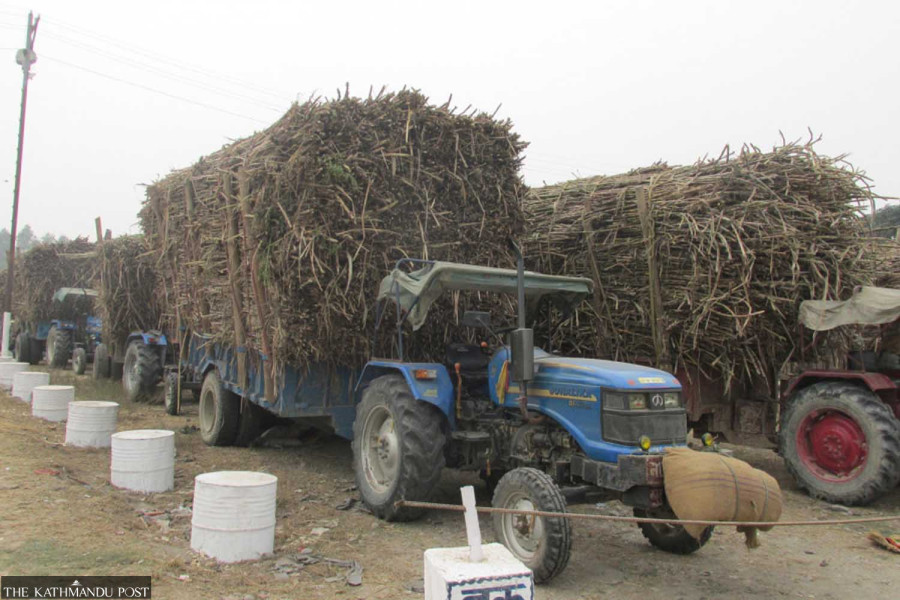National
No clarity on Rs500 billion microfinance fund meant for lending to farmers
Officials say they are working on a concept paper on how to make the scheme proposed in the budget for this fiscal year work for farmers.
Prithvi Man Shrestha
Though the government announced through the budget that a microfinance fund of Rs500 billion would be established to extend agriculture credit at farmers’ doorsteps, officials at both the government and central bank are still not sure about the nature of the proposed scheme.
It’s been nearly two months since the budget for the current fiscal year 2022-23 was presented on May 29.
Finance Ministry officials say they are working to conceptualise the nature of the microfinance fund.
“The exact nature of the proposed microfinance fund is not clear yet,” said Ramesh Kumar KC, joint secretary at the finance ministry. “But we are working on a draft of a concept paper with two options—forming a separate microfinance fund to invest in the agriculture sector, and investing in the sector through existing rural development banks.”
According to him, there will be clarity on the nature of the proposed microfinance fund in the next two months when the concept paper is finalised.
Finance Ministry officials said that they are exploring different options as the political leadership has not given any clear instruction regarding the nature of the proposed microfinance fund.
Since Janardan Sharma, who presented the budget as finance minister resigned on July 6 following allegations that he employed outsiders in budget making, Prime Minister Sher Bahadur Deuba has not appointed his replacement and has been looking after the portfolio himself.
As per the budgetary provision, banks and financial institutions will be mandatorily required to divert a certain portion of their lending to the agriculture production and other priority sectors.
An arrangement will also be made to invest a certain amount of funds from the Citizens Investment Fund, Employees Provident Fund, and Social Security Fund.
“The arrangement of the microfinance fund is expected to contribute significantly to increase financial access to agricultural production,” the budget states.
Chakra Bahadur Budha, chief of the budget and programme division at the Finance Ministry, told the Post in early June that the government introduced the concept of lending through a microfinance fund in order to mobilise financial resources in the agriculture sector via a single window.
The government has not yet made clear the weakness of the current arrangement of agricultural lending though the central bank has instructed the banks and financial institutions to set aside a certain portion of their total lending for the agriculture sector.
By mid-July 2022, commercial banks must ensure that at least 12 percent of their total lending goes towards the agriculture sector, according to the Nepal Rastra Bank’s directives.
Likewise, the development banks and finance companies are required to disburse at least 17 percent and 12 percent of their total credit, respectively, to the specified sectors such as agriculture; micro, small and medium enterprises; energy, and tourism by mid-July 2022.
The banks and financial institutions have increased their lending to the sector over the last several years.
Despite the budgetary provision that banks and financial institutions would be told to inject a certain amount of their agriculture loans through the new body, the government does not have any plans to force them to transfer their all agriculture lending to the proposed fund.
There already are a rural development bank and wholesale lenders like the Small Farmer Development Microfinance Financial Institution Limited.
There is one single rural development bank, formed through a merger of five such banks, which provides micro-credit of up to Rs1 million including up to Rs300,000 under collective guarantee to micro and small enterprises.
The Small Farmer Development Microfinance provides wholesale credit and technical support services to Small Farmer Agricultural Cooperatives in particular and all other community-based cooperatives in general. Cooperatives are ‘D’ class financial institutions under Nepal Rastra Bank’s categorisation.
KC, however, suggested that the proposed microfinance fund could be a wholesale lender like the Small Farmer Development Microfinance Financial Institution.
According to KC, the proposed microfinance fund could be bigger than the ‘D’ class microfinance fund with the paid-up capital as high as Rs2 billion.
The government plans to make an arrangement for local governments to invest in the fund as shareholders.
“The plan is to ask each municipality to invest Rs10 million while rural municipalities will be requested to invest Rs5 million to set up the fund,” said KC, who is also the chief of the financial sector management division at the Finance Ministry.
The ministry plans to ask local governments to invest in the fund considering the fact that access to finance is a big problem for farmers as banks and financial institutions are not present in all local units.
But despite announcing the Rs500 billion fund, the federal government has not allocated a single penny for it.
As the officials of the Finance Ministry are preparing to draft the concept paper, they have yet to consult the central bank on the plan.
“We are not sure what is the concept behind the budgetary provision of agriculture lending through microfinance funds,” said Prakash Kumar Shrestha, chief of economic research department at the Nepal Rastra Bank. “Obviously, it was not a provision recommended by the central bank.”
According to him, they had earlier discussed the proposed fund and found a lack of clarity in the budgetary provision. “Things might become clear after holding more discussions,” he said.
The Monetary Policy 2022-23 presented by the central bank last week has, however, stated that the central bank would facilitate the implementation of the budgetary provision based on legal, institutional and working procedures to be formulated later.
One major reason for the lack of proper consultations between the ministry and the central bank on the proposed fund is the frosty relations between then finance minister Janardan Sharma and Governor Maha Prasad Adhikari, according to officials of the Nepal Rastra Bank.
In early April, on the recommendation of Sharma, the Cabinet formed a committee to probe Adhikari’s activities, leading to the latter’s suspension. But weeks later, the Supreme Court stayed the suspension, paving the way for Adhikari to resume office.
Amid bitter relations, Sharma and Adhikari met only on June 8 to discuss the monetary policy to be introduced by the central bank, after the budget for the next fiscal year was introduced on May 29. It was the first meeting between the two after the fallout in April, according to a senior official of the central bank.
“It is not clear whether the lendings made by banks and financial institutions to the agriculture sector should also be brought under the proposed microfinance fund,” Shrestha said. “If so, under what law such transfer of loans is possible is not clear.”
Shrestha said if the additional lending is to be made through the proposed microfinance fund, it could be done through existing micro-finance institutions which are engaged in wholesale lending to the deprived sectors.
Central bank spokesman Gunakar Bhatta said it would be better for the new entity [microfinance fund] to search for new sources of finance for lending instead of taking resources from banks and financial institutions.
Besides the central bank, commercial banks are also not clear about the proposed microfinance fund.
Ashoke Rana, chief executive officer of Himalayan Bank, said they were not aware about how the proposed microfinance fund would function.
“At least, this proposed scheme should not be like other entities such as the Youth Self Employment Fund and Poverty Alleviation Fund whose funding as per political interests has resulted in no recovery of credits,” he said. “Regulation and supervision by the central bank is a must.”




 8.12°C Kathmandu
8.12°C Kathmandu














